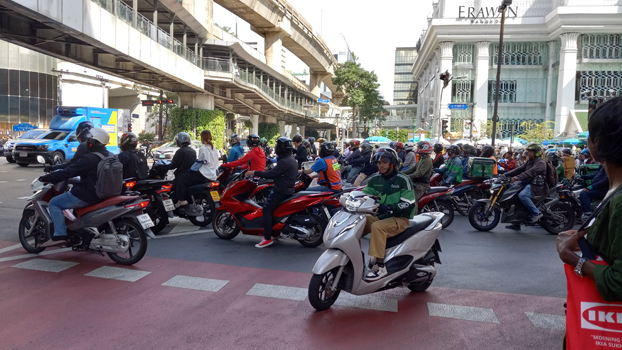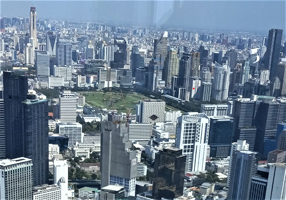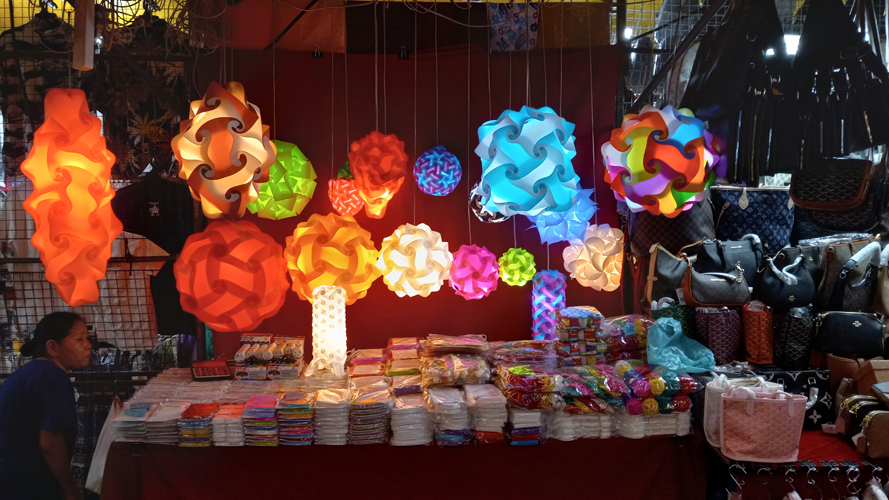 |
 |
|
Motorbikes piling up at a 5 minute light |
Our place (red dot) |
The city is wonderfully photogenic. The temples are extravagant towers of gold
and colorful ceramics, gold Buddhas abound, and all kinds of colorful spirits guard
entrances and rooftops. This tradition has carried into the skyscraper age, as every
building seeks to hide its boring glass tower essence with unique crowns, unusual
wrappings and colorful lighting on their frames. The Mahanakhon tower looks in places
like a Jenga stack, ready to fall. Its dark gray skin , combined with the ins and
outs of Jenga blocks makes it look like it is in an advanced state of deterioration,
but when the sun hits it, it gleams of silver blue.
After three weeks, when we had visited most of what wanted and could recognize
landmarks from above, we went to Mahankhon and up to the 78th floor roof deck. I was
surprised that despite being 1125 feet up, it was not the least bit windy, and was
more searingly hot than on the ground. The views were of course, spectacular. Towers
of all shapes and sizes everywhere. Sprawl as far as the eye could see. Surprisingly
few bridges across the Chao Phraya river. A dozen or so helicopter pads atop
buildings all around us. The haze of pollution prevented any kind of great photo,
but the experience was unforgettable. Steps up were covered in plush, comfy gold
seats, and a patio at the very top had sofas and tables for those not in a hurry.
The Tray, a glass floor extension out over the abyss, did not provide any kind of
great view, but tested a lot of visitors’ fear of heights. Back on the ground, an
absolute maze of market stalls selling all kinds of food to feed lunch to a hundred
thousand office workers in Silom lured us in. It was Laai Sap Market, the biggest
in the country, running for endless blocks and alleys, in buildings and outside.
Bangkok is really centrally located in southeast Asia. It is a two hour flight to
Singapore, Kuala Lumpur, Jakarta, Hanoi, Ho Chi Minh, and even less to Yangon,
Phnom Penh and Vientiane. We managed to take advantage of this with a side trip to
Hanoi, which was another kind of wild, unexpected city (Everywhere else there was
massive flooding and/or monsoon rains). Southeast Asia is a great experience because
it is half a world away, entirely different in food and custom, and yet easy to fit in.
The energy is infectious, and the living is thrillingly inexpensive for an American.
Managing 23 million people, tens of millions more tourists, in an atmosphere so
thick you can see it, in heat so uncomfortable people can only function in air-
conditioning is no mean feat. That Bangkok handles it so well speaks well for a
potential future of overpopulation, climate change, and pollution. Transit, cleanliness
and order are key. They make they it easy to believe a post-apocalyptic monster
dystopian city can instead be a livable, enjoyable experience. Somehow, it all works,
really well. But I’d hate to be there if the music stops.

